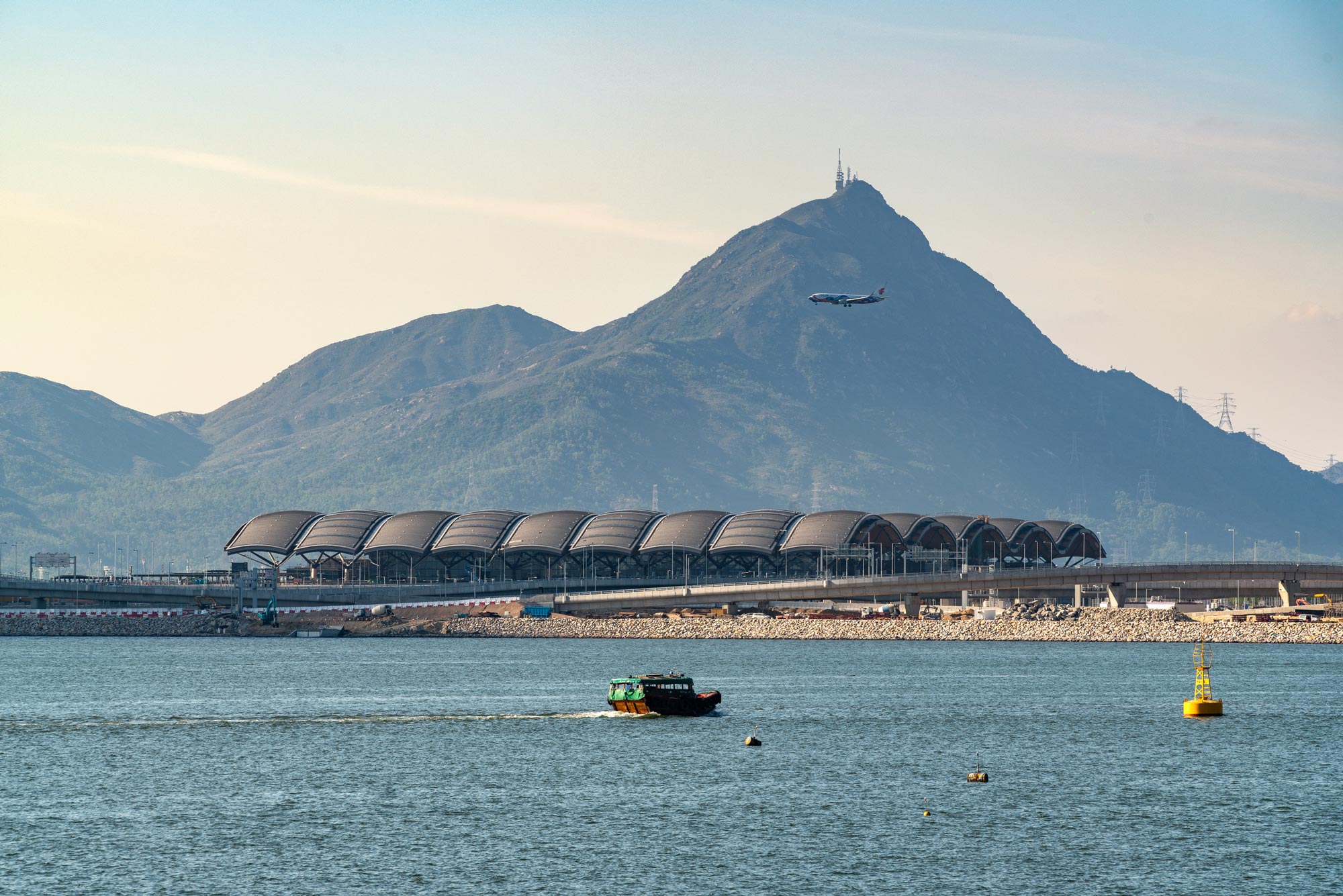Køge, Denmark
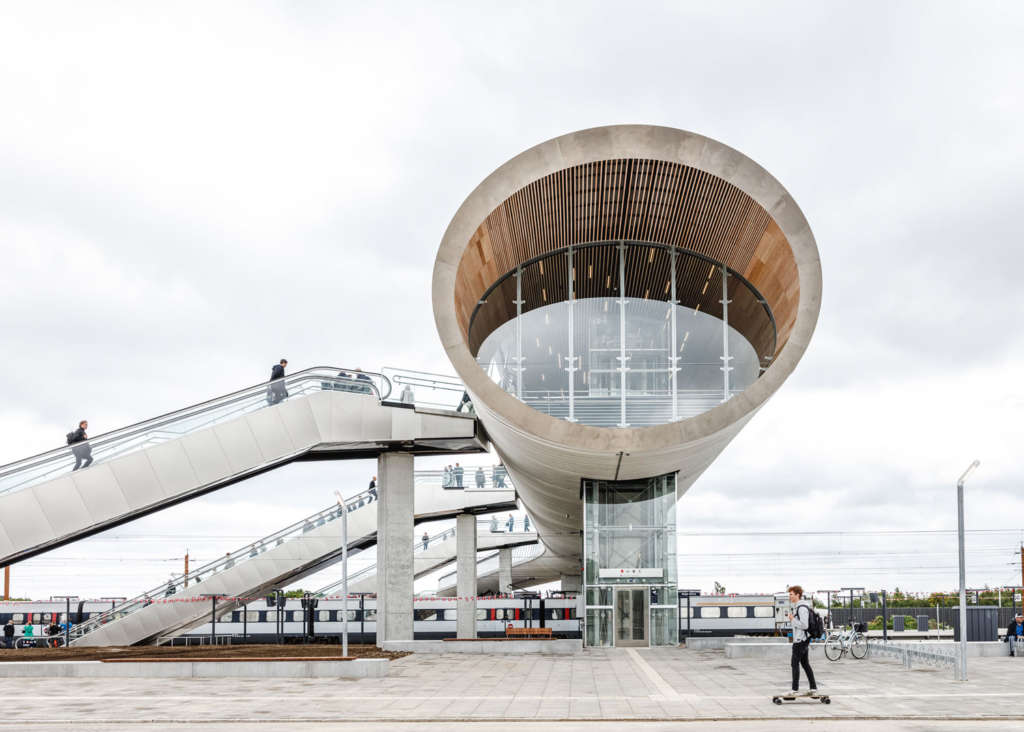
The following description is courtesy of COBE.
In early summer, the new traffic hub Køge Nord Station was officially opened. A spectacular footbridge, a station and a park area that form a significant hub for green mobility as well as a unique example of Danish architecture and engineering.
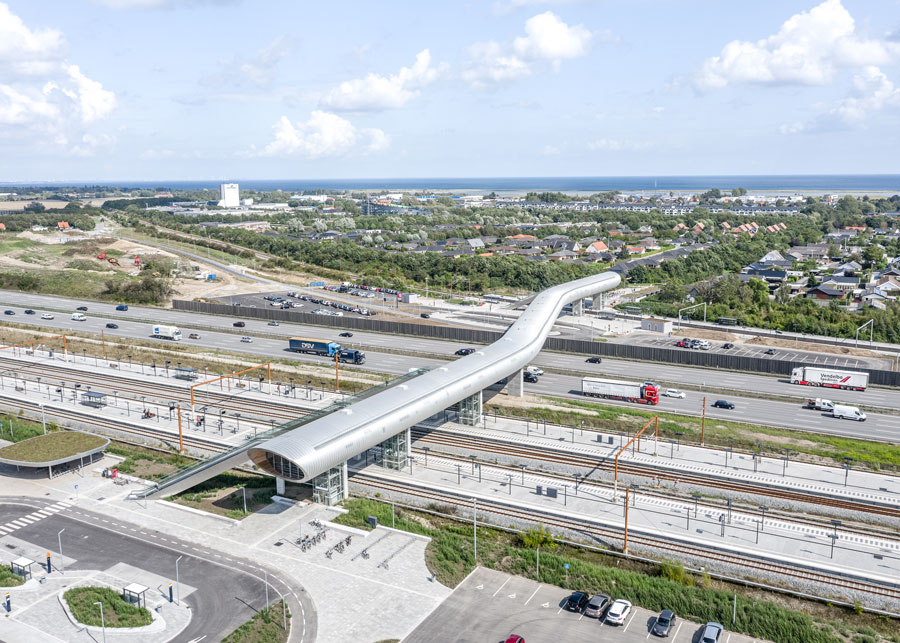
Køge Nord Station was designed by an architectural team consisting of COBE and DISSING+WEITLING architecture. Køge Nord Station was officially opened by Crown Prince Frederik at an event on May 31, 2019.
The event marked the opening of the new gateway to Copenhagen, which provides access to more efficient and sustainable transport for everyone going to and from the nation’s capital. And that is not all: For Køge and the rest of the region the new project adds a landmark of international dimensions: the 225-meter-long footbridge that connects the new double-track high-speed rail line between Copenhagen and the city of Ringsted with the existing commuter urban-suburban S-train line above the Køge Bugt Highway.
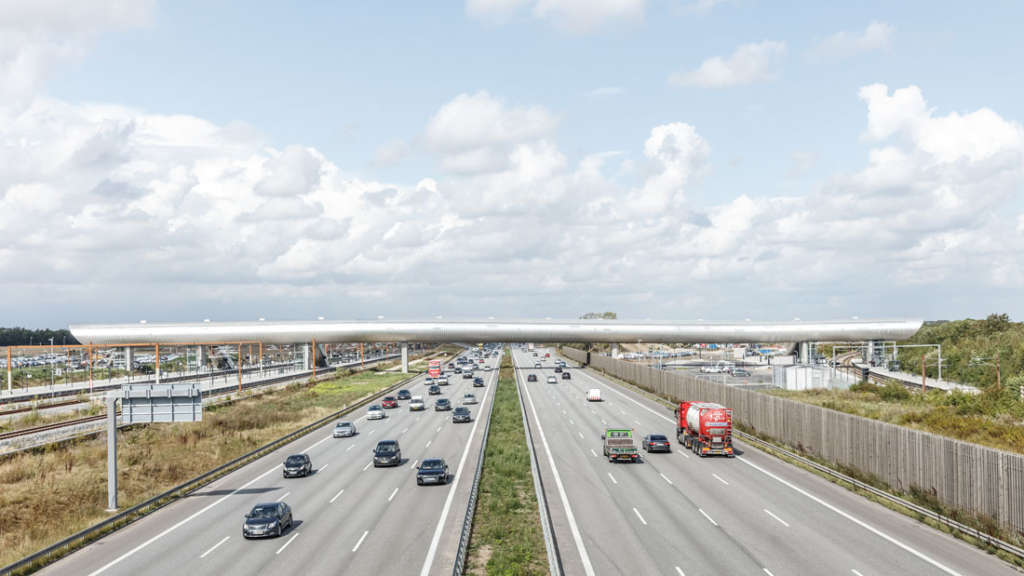
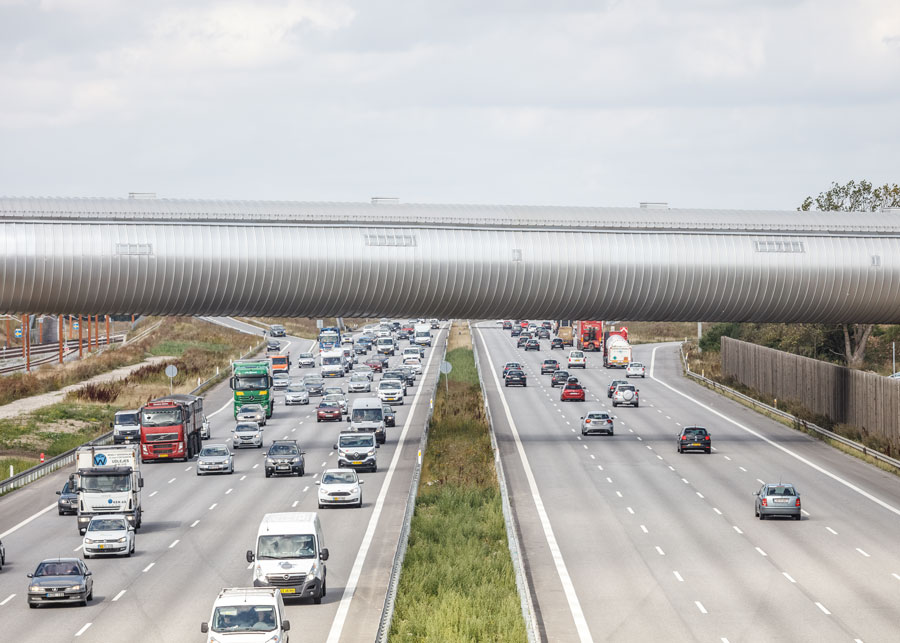
The striking futuristic design is apt for an area that is currently undergoing tremendous transformation, and the bridge is going to act as a catalyst for growth and development in the Køge area in coming years, says Dan Stubbergaard, architect and the founder of COBE: ”Together, we have designed a landmark for the development that the city of Køge is currently undergoing. A development driven by innovation, pioneering spirit and a bold outlook that is embodied by the station bridge and the related facilities. The bridge is also a new architectural attraction for the area; a long, spectacular steel snake sinuously extending above the railway lines and offering the users a magnificent panoramic view of the cultural landscape. Moreover, Køge Nord Station is an important pillar and catalyst in the larger vision plan for Køge and the larger region, which places a high priority on attracting qualified labor and creating optimal, green and sustainable transport options in the area. It is our hope, and our firm conviction, that Køge Nord Station will contribute to this future vision.”

Rasmus Hjortshøj – COAST 
Rasmus Hjortshøj – COAST
The station architecture and technical design promote ’the good travel experience’, where the flow inside the covered bridge is designed to offer both an open view to the north and smaller apertures in the interior wood panels toward the south. That offers views of the outside and an intimate feel as well as a good flow and zones for pausing:
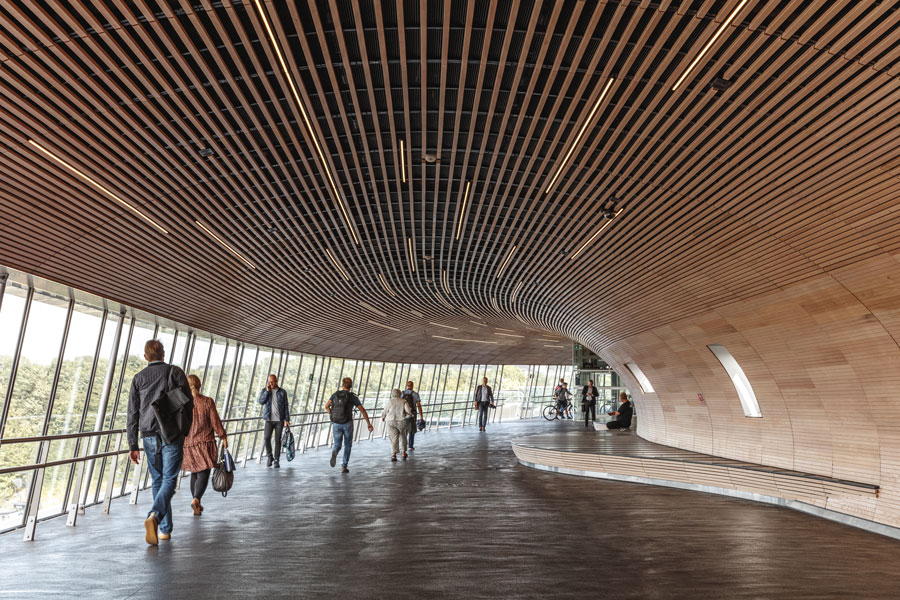
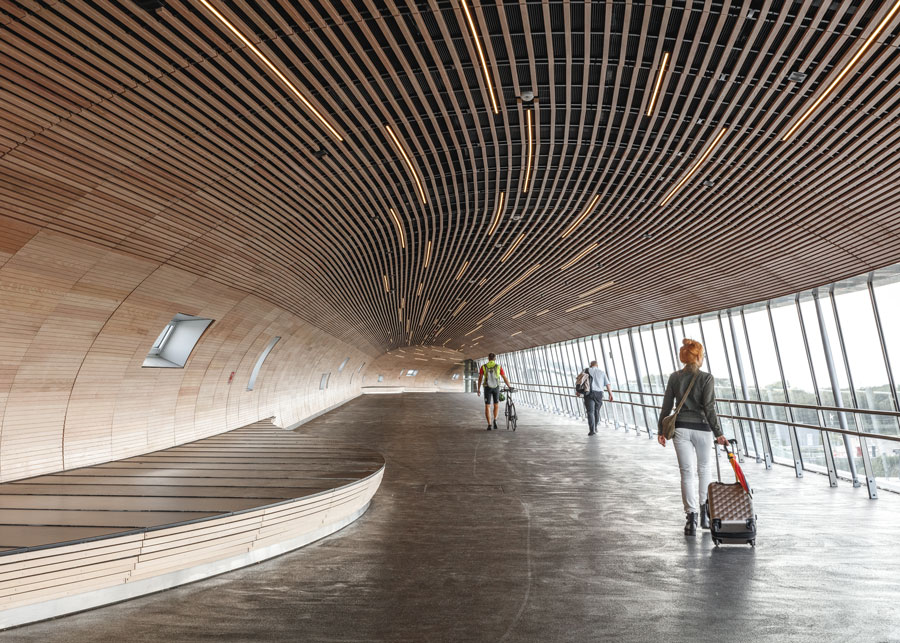
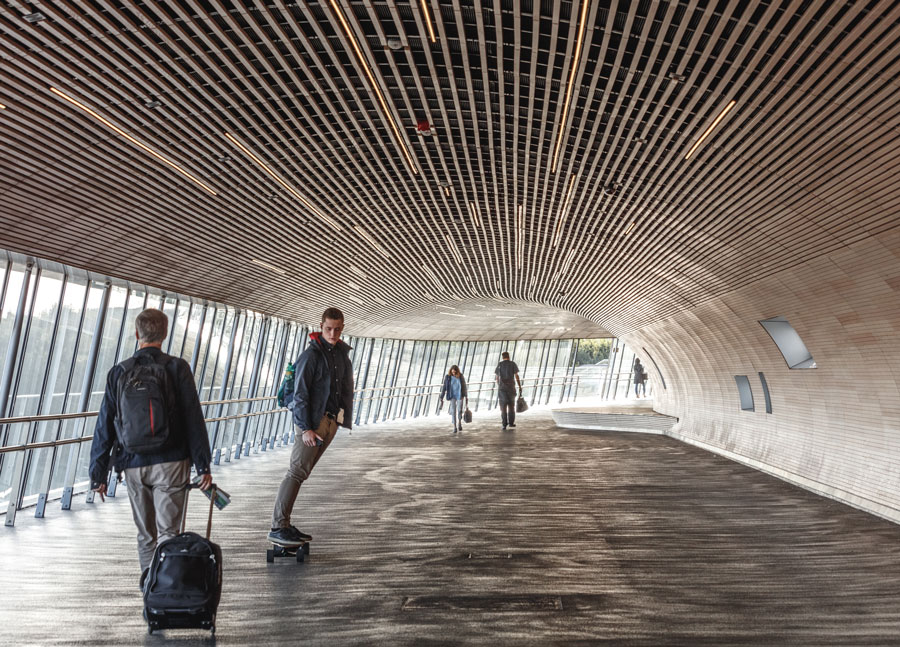
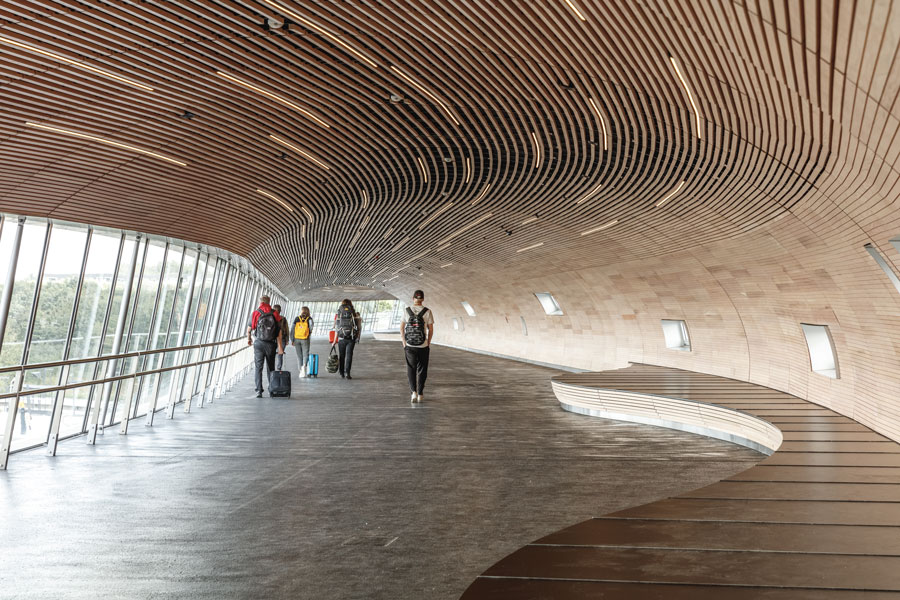
”People spend many hours of their life in transit. That’s why we sought to give the footbridge a quality that goes beyond the purely functional and practical: The interior space is covered with wooden slats that provide a warm, tactile experience in transit and waiting situations. It is, quite simply, a welcoming and inviting space, unlike what you often see in stations and transport facilities. The interior space is contrasted by the smooth, cool aluminum exterior that enters into a dialogue with the infrastructural expression of the place. Banedanmark took a bold and visionary approach, both when they announced the competition and when they picked the winning proposal. As a result, we can now enjoy an architectural beacon capable of branding the region and demonstrating the capability of Danish architects and engineers. The bridge has ”postcard potential”, but the main point is the effect and the influence the project will have on so many people’s everyday life”, says Jesper B. Henriksen, architect and partner at DISSING+WEITLING architecture.
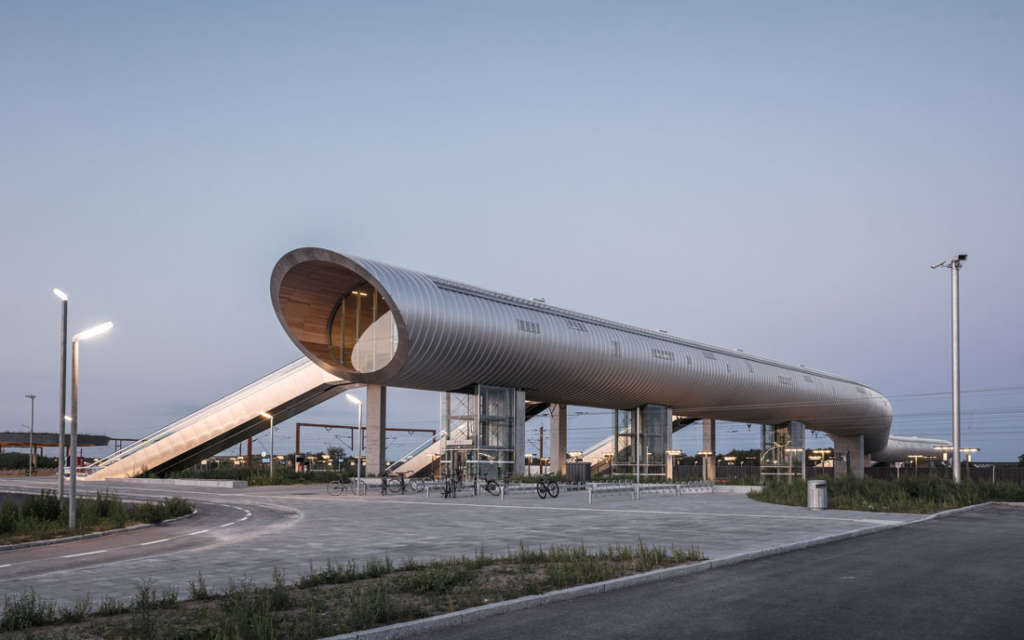
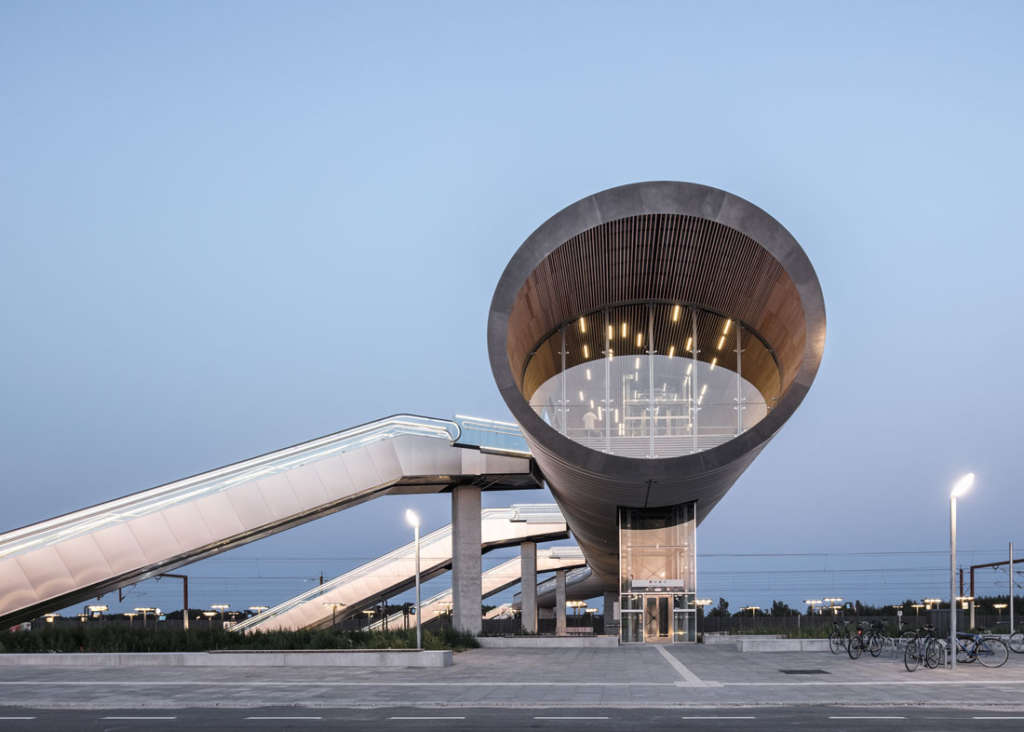
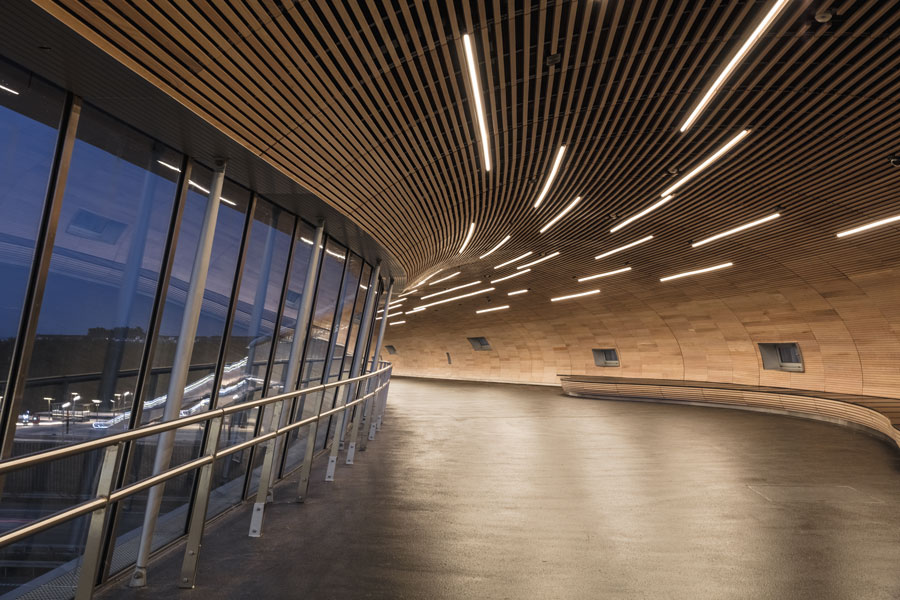
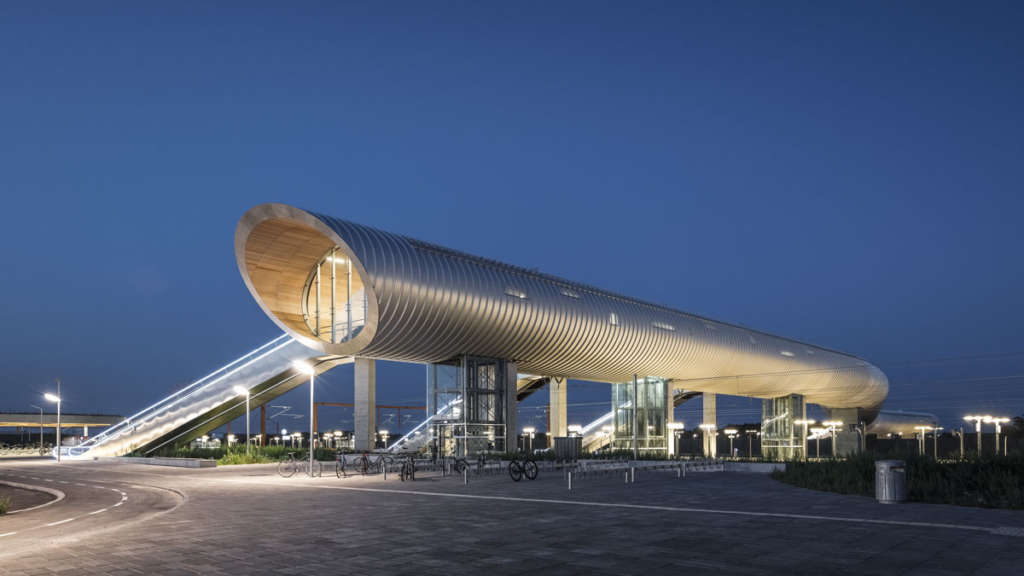
Project Facts
Client: Banedanmark, Køge Municipality and DSB (Danish State Railways).
Architects: COBE and DISSING+WEITLING architecture.
Consulting engineer: COWI. Contractor: Bladt Industries.
About Køge Nord Station
• Køge Nord Station is an important traffic hub for Greater Copenhagen at the juncture of the high-speed regional rail line, the urban-suburban S-train line and Køge Bugt motorway
• The station is scheduled to run six trains an hour in each direction on the S-train line and three regional trains an hour in each direction
• Every day, an average of 90,000 passengers are expected to pass through this juncture; about 8,000 of them are expected to use the station
• The Køge Nord Station project includes a vision plan, a footbridge and a train station as well as parking and transit facilities and is a unique example of Danish architecture and engineering
• Banedanmark is the client for the footbridge, Køge Municipality for the parking and transit facilities and DSB for train platform furnishings
• Køge Nord Station was announced as an international project competition in the EU in 2014. Thirty- eight teams from Japan, the United States and seven EU countries submitted bids for the project, four of which subsequently pre-qualified.
About the Footbridge
• The groundbreaking ceremony took place on 13 September 2016
• The covered footbridge is 225 meters long and 9 meters wide
• The total weight of the bridge, including elevators and escalators, is 1,000 metric tons
• The bridge has a 180-degree panoramic view of the highway and the cultural landscape
• It was installed in six sections, the heaviest section weighing 195 metric tons
• The bridge construction is supported by seven concrete pillars placed outside the clearance gauges of the railroad and highway
• The longest span over Køge Bugt highway measures 58 meters
• The steel girder has an internal dehumidification system and two Tuned Mass Dampers (TMD) for at- tenuating vibrations inside the two largest spans
• The exterior cladding of the footbridge consists of 48,00 m2 anodized aluminum panels
• The bridge has 31 windows in the south-facing facade and just one in the north-facing facade
• The project used 620 tons of steel and 920 m3 of concrete
• The bridge can carry up to 1,800 persons at a time
• The bridge is equipped with five elevators and five stairs in conjunction with escalators
• The elliptic shape is designed to hug the underlying terrain with its varying requirements to clearance height above the S-train line, the highway and the high-speed rail line





